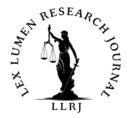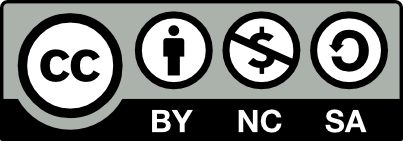Written by Sia Shah
Student, Gujarat National Law University, Gandhinagar
August 2025
Introduction
On the 7th of July, 2025, in a move that ignited nationwide debate, the Bombay High Court ironically distanced itself from many who had solemnly sworn to uphold the very ideals of justice it represents. The court rejected a petition pleading for the applicability of the POSH Act, 2013 to sexual harassment complaints filed by female advocates against other advocate members of the Bar Council of India. This rejection was due to the technical language of law, which raises a pertinent question; is justice simply limited to a textualist approach to interpretation of the letter of the law?
Instead, the court redirected the petitioners towards Section 35 of the Advocates Act, which provides for a disciplinary hearing on professional misconduct. But does sexual harassment not hold a much higher threshold than mere misconduct? What then, was the purpose of the court redirecting the petitioners to an avenue which is prima facie insufficient? And even if this solution was suggested, should it not have entailed detailed guidelines for appropriate application?
This piece seeks to discuss how the technicality of POSH Act alienates independent professionals like advocates, the insufficient measures provided in the Advocates Act, and alternative solutions to properly provide redress for the plight of female advocates.
Inadequacies of the Existing Framework
The PIL filed by the UNS Women Legal Association[1] pleaded for the formation of a permanent internal grievance committee of women advocates in all State Bar Council offices in view of the guidelines issued by the Supreme Court in Medha Kotwal Lele & Ors. v. Union of India & Ors.[2] and in view of the provisions of POSH Act, 2013. This reliance of the PIL on the framework of POSH is the lynchpin in its execution. The applicability of POSH depends on the existence of “employers” and “employees”. However, the Bar Council of India and State Bar Councils do not share an employer-employee relationship with advocates. Bar Council offices simply regulate advocates regarding professional conduct and etiquette via the exercise of disciplinary jurisdiction.[3]
Though born from the broadest judicial powers, the statute’s parochial interpretation stands legally sound. Advocates are independent, self-employed professionals, analogous to, let’s say, Chartered Accountants. If an unfortunate incident of sexual harassment is to occur between two fellow Chartered Accountants, the Institute of Chartered Accountants of India (ICAI) would not have the discretion to apply PoSH Act because Chartered Accountants across the country are neither employed at the workplace of ICAI, nor receive a remuneration from ICAI, as provided in the definition of “employee” under Section 2(f) of the PoSH Act.
Suppose we live in an ideal world, and the PoSH Act were indeed applicable to independent professionals like advocates and Chartered Accountants; what would be the scope of the Act? How will the statute be amended to widen the definition of “workplace”, “employer”, and “employee” to include independent practitioners? What system will the framework of PoSH attach itself to in order to enforce its provisions? Questions like these depict just how difficult it is to apply PoSH, owing to its technical legalese. But, must women advocates continue to work in fear, simply because they are not on anyone’s payroll? Due to the hierarchal nature of the legal profession, junior female advocates are highly susceptible to sexual harassment. The power dynamics that occur in the legal profession emphasize the need for a robust mechanism to address, resolve and prevent sexual harassment.
For this purpose, in Medha Kotwal, the court directed the Bar Council of India to ensure that all bar associations and persons associated with the State Bar Councils follow the Vishaka guidelines. Further, in 2023, the SC issued directions to all statutory bodies of professionals at the apex and state levels to ensure the formation of ICCs/LCs/ICs and to continually update necessary details regarding its composition, procedure, policies, rules, etc.[4] However, BCI and State Bar Councils have not taken any step towards following these orders. There exists no Complaints Committee, no mechanism to ensure privacy of hearing or anonymity of complainants, and no sensitization of procedure and persons involved in the hearing.
Instead of addressing the faults of the BCI and State Bar Councils, the court directed the petitioners towards Section 35 of the Advocates Act, 1961, which provides for a disciplinary hearing on receipt of complaints of professional misconduct or otherwise. However, Section 35 was created with the intention of dealing with matters such as the practice of law without a license, or a violation of professional etiquettes. The severity of sexual harassment complaints runs much higher than mere professional misconduct. The provisions of the Advocates Act are barely sufficient to appropriately address these matters.
Viable Remedies
In an effort to follow the letter of the law, a clear and direct remedy to the issue was effectively overlooked. As stated above, the apex court in Medha Kotwal clearly laid down that all statutory institutions responsible for regulating professionals, independent or employed, must follow the Vishaka guidelines. The Bombay HC ought to review its ruling and redirect its focus towards enforcing the Medha Kotwal ruling.
A glorious example can be found in the Gender Sensitization and Internal Complaints Committee set up the apex court and all High Courts of India. Due to not fitting within the framework of PoSH, the courts found their way around the shortcomings of the PoSH Act and introduced the Gender Sensitization and Internal Complaints Committee. These regulations implemented the Vishaka guidelines and provided courts with the legal basis to conduct mediation or enforce a disciplinary hearing. The BCI can simply follow in its footsteps by issuing circulars or necessary instructions, as mandated in the Medha Kotwal ruling.
Inspiration can also be taken from the Australian National Model Framework Addressing Sexual Harassment, which provides a choice to legal organizations, workplaces, legal practices, chambers, and regulators or other disciplinary or external complaints bodies to either adopt the Model Framework, or use it to amend their own while retaining the spirit of the Model Framework.[5]
However, despite the existence of obvious remedies, if Section 35 of the Advocates Act is to be focused on as per the recent ruling, then multiple amendments and new provisions will be required in order to sensitize it and avail female advocates with the appropriate mechanism to take care of their physical, mental, and emotional health. The following suggestions can be incorporated into the statute:
- Amendments to Section 9 of the Advocates Act: Section 9 details that a disciplinary committee must include three members. It should be amended to consolidate the Vishaka guidelines to elect one woman member from the Council, and co-opt one woman advocate to constitute the committee. All three members must have experience and deep interest in the cause of women and social work.
- Provision for Privacy and Anonymity: Provisions must be created to ensure privacy of hearing and maintain the anonymity of the complainant. The purpose for doing so lies in the tricky hierarchal system of advocates, which fosters a sense of fear among victims. Anonymity and privacy of hearing will ensure that women have a safe space where they can address their harassment.
- Sensitization of Members: The members of the disciplinary committee must be trained and sensitized to handle these issues without causing distress to the victims. The approach to educate and sensitize could lie at the discretion of State Bar Councils and BCI, as they deem appropriate.
- Provision for Interim Reliefs: Certain interim reliefs should be provided, such as the suspension of license to practice law during the course of the hearing. Section 35 only provides for suspension after the completion of hearing, not during it.
- Mandatory Process of Mediation: On receipt of a complaint, the first step must be to constitute mediation process between the victim and the accused. If mediation does not yield any results, a disciplinary hearing must follow.
Conclusion
Considering all the issues that female advocates face within and beyond courts, the above provided multiple remedies have the potential to put an end to this generations-long abuse of power by male advocates and bring a new wave of reform, along with an increase in the number of practicing female advocates, which stands at about 15% right now.[6] It will foster growth and opportunities for women, without the fear of being suppressed or alienated by their own community. For those who have fought tooth and nail to gain their present standing and stature in the society, we now stand at a critical juncture in the journey of their empowerment. A simple obedience to pre-existing guidelines will go a long way in this journey.
[1] UNS Women Legal Association (Regd) v. Bar Council of India, (2025) SCC OnLine Bom 2647.
[2] Medha Kotwal Lele & Ors. v. Union of India & Ors., (2013) 1 SCC 311.
[3] Bar Council of India, https://www.barcouncilofindia.org/home (last visited August 12, 2025).
[4] Aureliano Fernandes v. State of Goa (2024) 1 SCC 632.
[5] Jwalika Balaji, Bombay HC has left women advocates without PoSH shield. We must extend the Act to Bar Councils, The Print (August 12, 2025, 12:26 PM), https://theprint.in/opinion/bombay-high-court-women-advocates-posh-act-bar-councils/2684098/
[6] IndiaToday, https://www.indiatoday.in/india/story/law-minister-kiren-rijiju-number-female-lawyers-country-no-data-nine-states-parliament-1981612-2022-07-29 (last visited August 12, 2025)


